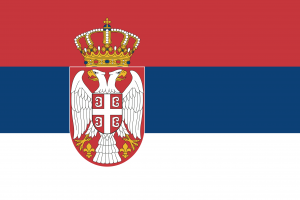Language/Serbian/Grammar/Verbs:-Imperative/lt
 Հայերէն
Հայերէն Български език
Български език 官话
官话 官話
官話 Hrvatski jezik
Hrvatski jezik Český jazyk
Český jazyk Nederlands
Nederlands English
English Suomen kieli
Suomen kieli Français
Français Deutsch
Deutsch עברית
עברית हिन्दी
हिन्दी Magyar
Magyar Bahasa Indonesia
Bahasa Indonesia فارسی
فارسی Italiano
Italiano 日本語
日本語 Қазақ тілі
Қазақ тілі 한국어
한국어 Lietuvių kalba
Lietuvių kalba Νέα Ελληνικά
Νέα Ελληνικά Şimali Azərbaycanlılar
Şimali Azərbaycanlılar Język polski
Język polski Português
Português Limba Română
Limba Română Русский язык
Русский язык Español
Español العربية القياسية
العربية القياسية Svenska
Svenska Wikang Tagalog
Wikang Tagalog தமிழ்
தமிழ் ภาษาไทย
ภาษาไทย Türkçe
Türkçe Українська мова
Українська мова Urdu
Urdu Tiếng Việt
Tiếng Việt
Įvadas[edit | edit source]
Sveiki atvykę į mūsų pamoką apie serbų kalbos veiksmažodžius! Šiandien mes mokysimės apie įsakymo režimą, kuris yra labai svarbus ir praktiškas serbų kalboje. Įsakymo režimas leidžia mums duoti nurodymus, prašymus ar patarimus. Ši kalbos dalis yra ypač naudinga kasdieniame bendravime, todėl svarbu ją gerai suprasti ir gebėti taikyti.
Pamokoje aptarsime:
- Kas yra įsakymo režimas?
- Kaip sudaryti įsakymo formą?
- Pateiksime daug pavyzdžių, kad geriau suprastumėte.
- Praktinės užduotys, kad galėtumėte išbandyti savo žinias.
Kas yra įsakymo režimas?[edit | edit source]
Įsakymo režimas (serbų kalboje vadinamas "imperativ") naudojamas, kai norime ką nors įsakyt, prašyti ar patarti. Tai gali būti tiesioginiai nurodymai arba švelnesni prašymai. Pavyzdžiui, kai sakome „Eik“ arba „Prašau, ateik čia“, mes naudojame įsakymo režimą.
Įsakymo režimo formos[edit | edit source]
Serbų kalboje įsakymo režimas gali būti sudarytas tiek vienaskaitos, tiek daugiskaitos formomis. Pavyzdžiui:
- Vienaskaita: Eik! (eik)
- Daugiskaita: Eikite! (eikite)
Pastaba: Įsakymo forma gali skirtis priklausomai nuo veiksmažodžio tipo (reguliarūs ir nereguliarūs veiksmažodžiai).
Veiksmažodžių grupės[edit | edit source]
Serbų kalboje veiksmažodžiai paprastai yra suskirstyti į tris grupes pagal jų galūnes:
- -ati (pvz., raditi - dirbti)
- -iti (pvz., učiti - mokyti)
- -eti (pvz., gledati - žiūrėti)
Kiekvienai grupei taikomi skirtingi taisyklių rinkiniai sudarant įsakymo formą.
Pavyzdžiai[edit | edit source]
Dabar pažvelkime į keletą pavyzdžių, kaip sudaryti įsakymo formas iš skirtingų veiksmažodžių grupių.
| Serbian | Pronunciation | Lithuanian |
|---|---|---|
| raditi !! raˈditi !! dirbti | ||
| učiti !! uˈčiti !! mokyti | ||
| gledati !! ˈgledati !! žiūrėti |
Dabar pažvelkime, kaip šie veiksmažodžiai atrodo įsakymo režimu:
| Serbian | Pronunciation | Lithuanian |
|---|---|---|
| radi! !! raˈdi !! dirbk! | ||
| uči! !! uˈči !! mokyk! | ||
| gledaj! !! ˈgledaj !! žiūrėk! |
Daugiskaitos formos[edit | edit source]
Dabar pažvelkime, kaip šie veiksmažodžiai atrodo daugiskaitos formoje:
| Serbian | Pronunciation | Lithuanian |
|---|---|---|
| radite! !! raˈdite !! dirbkite! | ||
| učite! !! uˈčite !! mokykite! | ||
| gledajte! !! ˈgledajte !! žiūrėkite! |
Kitos svarbios pastabos[edit | edit source]
- Naudokite pagarbą: Kai kalbate su vyresniais ar nepažįstamais žmonėmis, geriausia naudoti daugiskaitos formą.
- Nesikreipkite: Įsakymo forma gali būti švelnesnė, kai naudojate žodžius „prašome“ arba „būtų malonu“, kad jūsų prašymas atrodo mandagiau.
Pratimai[edit | edit source]
Dabar, kai turite pakankamai žinių apie įsakymo režimą, laikas praktikuoti! Čia yra 10 užduočių, kuriomis galite pasitikrinti savo žinias:
1. Sukurkite įsakymo formą iš šių veiksmažodžių:
- jesti (valgyti)
- piti (gerti)
- trčati (bėgti)
2. Paverskite šiuos sakinius į įsakymo režimą:
- Prašome ateiti čia. (Prašome ateiti čia.)
- Eikite pas gydytoją. (Eikite pas gydytoją.)
3. Parašykite 3 skirtingus įsakymus, kaip paprašyti draugo padėti jums.
4. Sukurkite daugiskaitos formą iš šių veiksmažodžių:
- čitati (skaityti)
- pisati (rašyti)
- svirati (groti)
5. Užpildykite spragas su tinkamu įsakymo režimu:
- __________ (eiti) į parduotuvę.
- __________ (mokyti) vaikus.
6. Pasakykite, ką daryti šiais atvejais:
- Kai norite, kad kas nors pasakytų jums tiesą.
- Kai norite, kad kas nors padėtų jums su namų darbais.
7. Sukurkite sakinius, kurie būtų draugiški prašymai:
- __________ (padėti) man.
- __________ (pasiūlyti) gerą idėją.
8. Sukurkite trijų žodžių sakinius, naudojant įsakymo režimą.
9. Pasakykite draugui, ką daryti, jei jis nori pailsėti.
10. Užpildykite šiuos sakinius su tinkamu įsakymo režimu:
- __________ (valgyti) vaisius.
- __________ (žaisti) su draugais.
Sprendimai ir paaiškinimai[edit | edit source]
Dabar pažymėsime teisingus atsakymus ir paaiškinsime, kodėl jie yra teisingi.
1.
- valgyk!
- gerk!
- bėk!
2.
- Ateik čia!
- Eikite pas gydytoją!
3.
- Prašau padėti man su namų darbais!
- Prašau padėti man su pirkimu!
- Būk malonus ir padėk man!
4.
- čitajte!
- pišite!
- svirajte!
5.
- Eikite į parduotuvę.
- Mokykite vaikus.
6.
- Pasakyk tiesą!
- Padėk man su namų darbais!
7.
- Padėk man!
- Pasiūlyk gerą idėją!
8.
- Eik čia!
- Mokykis gerai!
- Žiūrėk į mane!
9.
- Pailsėk!
10.
- Valgyk vaisius!
- Žaisk su draugais!
Apibendrinimas[edit | edit source]
Šiandien mes išmokome, kaip naudoti įsakymo režimą serbų kalboje, supratome skirtingas formas ir taikymus, o dabar turime puikią galimybę praktikuoti šias žinias. Būtent šie įgūdžiai padės jums efektyviau bendrauti serbų kalba. Tikiuosi, kad jums patiko ši pamoka ir kad jūs jau jaučiate drąsiau naudotis įsakymo režimu kasdieniame gyvenime!
Kitos pamokos[edit | edit source]
- 0 to A1 Course
- Nuoplaukio iki A1 kursas → Gramatika → Linksniai: Nominatyvas ir Vardininkas
- 0 i A1 Tečaj → Gramatika → Pridjevi: Komparativ i Superlativ
- 0 i A1 tečaj → Gramatika → Zamjenice: Lične zamjenice
- 0 iž A1 kursa → Gramatika → Imenice: Rod i broj
- Kursas nuo 0 iki A1 → Gramatika → Veiksmažodžiai: Praeities laikas
- Tečaj od 0 do A1 → Gramatika → Glagoli: Futur II
- Kursas nuo 0 iki A1 → Gramatika → Veiksmažodžiai: Dabartinis laikas

